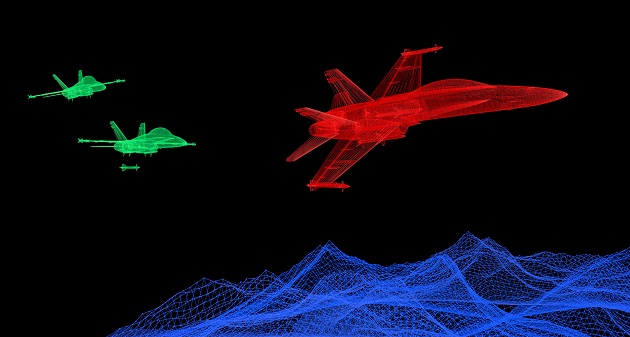Last month, the United States Air Force successfully flew an AI copilot on a U-2 spy plane in California, marking the first time AI has controlled a U.S. military system. The computerized U-2 copilot, affectionately named Artuµ, brought scenes from Star Wars a few parsecs closer to a cockpit near you. But the odd spelling was a nod to something that isn’t from a galaxy far, far away: the µZero algorithm developed by DeepMind.
Designed to dominate games like chess and Go, the Air Force retrained this commercial algorithm to operate the spy plane’s radar in under five weeks. After a million simulated missions, Artuµ wasn’t a typical Airman on its first flight at the 9th Reconnaissance Wing—it was the mission commander. The results were so promising that we’ve added electronic warfare to Artuµ’s next assignment: a role likely to see real-world missions in the near future. The real R2-D2 packed some mean electronic defences, too.
An era of algorithmic warfare has indeed begun. And as scary as that sounds, it’s taking place on a much larger battlefield whose “weaponry,” of all things, is commercial technology and startup companies.
Gamifying Warfare
To understand that broader campaign, it helps to zoom out from this particular AI front and discover how a startup helped precipitate it.
Whether played on boards or computers, games were perfect candidates for developing deep reinforcement learning, or the process by which AI intuits the rules, rewards, and penalties of unfamiliar systems through large-scale trial and error. As a new startup in 2010, DeepMind cut its teeth training AI to play old-school video games without access to the underlying code. By 2013, its AI could beat humans at Pong, and by 2020, all humans at any Atari game.
But DeepMind’s crowning achievement came in 2016 when AlphaGo, µZero’s great-great-grand-algorithm, dethroned the reigning world Go champion and ended human preeminence in strategy games—a true “Sputnik” moment for gaming, computer science, and military futurists alike.
Gamifying warfare for computer applications is nothing new. Franchises like Call of Duty, for example, make a pun-intended killing at it. U-2 reconnaissance operations are no different: Finding enemy targets is the reward, missing targets—or worse, being shot down—is the penalty, and physics are essentially the rules. But to grasp this “game,” Artuµ had to learn everything the hard way, including even basic tactics no human would try, like expecting enemy air defences also to shoot down enemy aircraft. They don’t. Lesson learned. Repeat.
But playing against a simulation takes Artuµ’s lessons only so far. To achieve beyond-human deep learning tactics, just as the µZero family did for strategy games, we need Artuµ to play against itself. However, unlike playing the opposite side of a board game, an opposing military operation, like denying reconnaissance during a simulated missile strike, needs unique algorithm training for its unique reward-penalty scheme. Consequently, we had no “enemy Artuµ” (or C2-B5 for Star Wars fans) to train against for Artuµ’s first flight.
So to operationalize electronic warfare—what Winston Churchill dubbed the “wizard war”—we’re gamifying it and creating that C2-B5 alter ego at our U-2 FedLab.
Next, we’ll complete millions of self-training runs to teach Artuµ/Cetuµ both the good side (sensing) and the dark side (jamming) of using the (electromagnetic) Force, though both are inherently good for our purposes. After mastering basic wizarding techniques, we expect deeper Jedi magic to follow, a bar already set in World War II. Aside from thwarting numerous Luftwaffe bomber raids, spoofing navigation signals caused one bomber to land mistakenly at an Allied airfield—a true Jedi mind-trick!
Given modern military reliance on the electromagnetic spectrum—from position, navigation, and timing to sensing and communications—“deep” machine-learned wizardry should soon live up to Churchill’s moniker.
As Artuµ and future AI join the controls of military systems, expect deep tactics to become increasingly critical for combat success, especially against adversary AI. However, unlike board games, future warfare will pit teams of humans and machines against each other, where few moves—including AI-crippling algorithmic mind-tricks—are off-limits. Battlefield success will require minimizing both carbon- and silicon-based weaknesses so a true synergy of strengths can emerge.
Innovation is the New Battlefield
The story could easily end right here: algorithmic warfare as the new battlefield and AI, the new weaponry. But past weapons breakthroughs, like satellites, microelectronics, and the internet itself, were created nearly exclusively for the U.S. military at costs prohibitive to most nations, let alone companies. Now, even startups can rival once-military-grade capabilities, and scaleups once science-fictional.
The µZero family is more than a Sputnik moment for science-fictional AI. It’s equally—and arguably, more importantly—that a war-winning breakthrough wasn’t developed in a government laboratory, defence industrial base, or government contract. It happened thanks to a commercial tech startup with a big idea that scaled to achieve it.
The story could easily end right here: algorithmic warfare as the new battlefield and AI, the new weaponry. But past weapons breakthroughs, like satellites, microelectronics, and the internet itself, were created nearly exclusively for the U.S. military at costs prohibitive to most nations, let alone companies. Now, even startups can rival once-military-grade capabilities, and scaleups once science-fictional.
The µZero family is more than a Sputnik moment for science-fictional AI. It’s equally—and arguably, more importantly—that a war-winning breakthrough wasn’t developed in a government laboratory, defence industrial base, or government contract. It happened thanks to a commercial tech startup with a big idea that scaled to achieve it.








